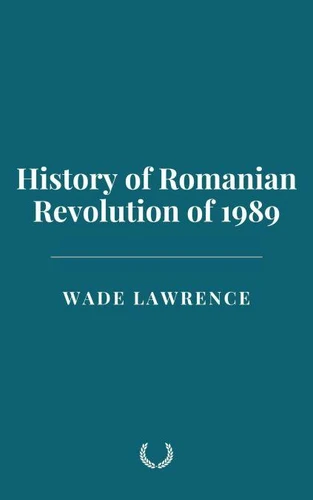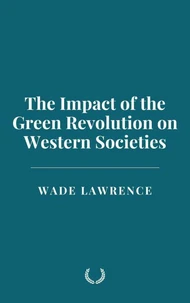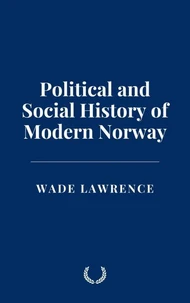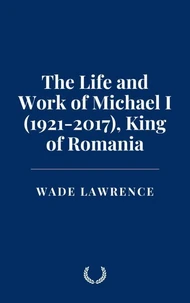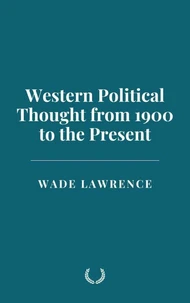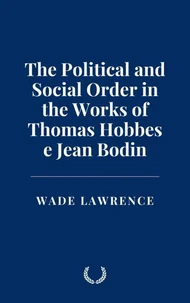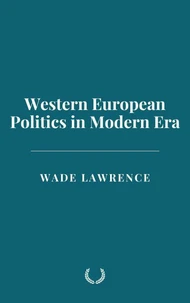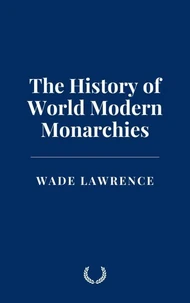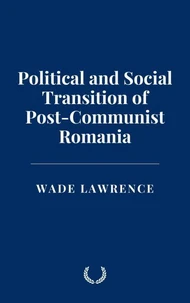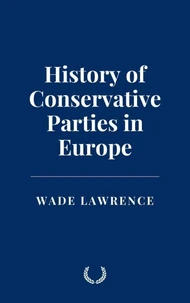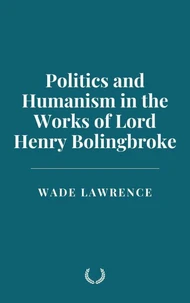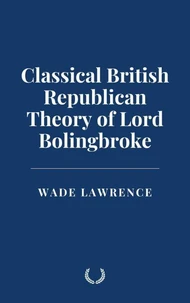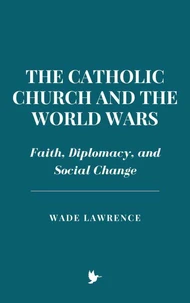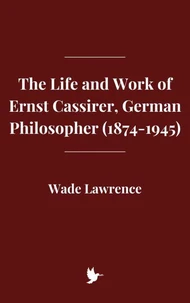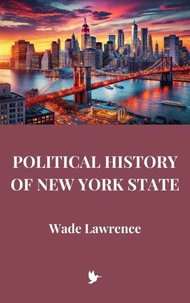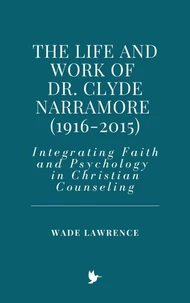History of Romanian Revolution of 1989
Par :Formats :
Disponible dans votre compte client Decitre ou Furet du Nord dès validation de votre commande. Le format ePub est :
- Compatible avec une lecture sur My Vivlio (smartphone, tablette, ordinateur)
- Compatible avec une lecture sur liseuses Vivlio
- Pour les liseuses autres que Vivlio, vous devez utiliser le logiciel Adobe Digital Edition. Non compatible avec la lecture sur les liseuses Kindle, Remarkable et Sony
 , qui est-ce ?
, qui est-ce ?Notre partenaire de plateforme de lecture numérique où vous retrouverez l'ensemble de vos ebooks gratuitement
Pour en savoir plus sur nos ebooks, consultez notre aide en ligne ici
- FormatePub
- ISBN8227083685
- EAN9798227083685
- Date de parution20/01/2025
- Protection num.pas de protection
- Infos supplémentairesepub
- ÉditeurBig Dog Books, LLC
Résumé
This book explores the complex and multifaceted history of the Romanian Revolution of 1989, from its explosive beginnings to the profound political, social, and economic struggles that followed. The revolution, which brought down Nicolae Ceau?escu's brutal and oppressive regime, was a momentous event in Romania's history. However, while it marked the end of a totalitarian dictatorship, it did not immediately lead to the creation of a stable democratic society.
The book delves into the immediate causes of the revolution, the key figures who led it, the various voices of resistance, and the brutal suppression of early uprisings. It examines the political aftermath, marked by the dominance of the National Salvation Front (FSN) and the persistence of former communist elites in key positions of power. The narrative also addresses the economic devastation left in the wake of Ceau?escu's autarkic policies, the painful transition from a state-controlled economy to a market-based system, and the resulting hardship faced by many Romanians.
The book further highlights Romania's gradual integration into the European community, culminating in its accession to the European Union and NATO, despite the ongoing struggles with corruption, weak institutions, and poverty. Romania's post-revolutionary identity is explored through the lens of its fractured social fabric, with particular emphasis on the ideological, cultural, and generational divides that emerged as the country sought to reconcile its communist past with its democratic future.
Through in-depth analysis of primary sources, historical accounts, and the perspectives of scholars and dissidents, this book illustrates how the revolution of 1989 was both a victory and an unfinished project. The struggle for true democracy, accountability, and economic prosperity continued long after Ceau?escu's fall, and Romania's path forward was shaped by both the hopes of its people and the enduring legacies of its totalitarian history.
Ultimately, the book sheds light on Romania's complex journey from revolution to a European future, showing how the promises of 1989 continue to influence the country's political and social trajectory.
The book delves into the immediate causes of the revolution, the key figures who led it, the various voices of resistance, and the brutal suppression of early uprisings. It examines the political aftermath, marked by the dominance of the National Salvation Front (FSN) and the persistence of former communist elites in key positions of power. The narrative also addresses the economic devastation left in the wake of Ceau?escu's autarkic policies, the painful transition from a state-controlled economy to a market-based system, and the resulting hardship faced by many Romanians.
The book further highlights Romania's gradual integration into the European community, culminating in its accession to the European Union and NATO, despite the ongoing struggles with corruption, weak institutions, and poverty. Romania's post-revolutionary identity is explored through the lens of its fractured social fabric, with particular emphasis on the ideological, cultural, and generational divides that emerged as the country sought to reconcile its communist past with its democratic future.
Through in-depth analysis of primary sources, historical accounts, and the perspectives of scholars and dissidents, this book illustrates how the revolution of 1989 was both a victory and an unfinished project. The struggle for true democracy, accountability, and economic prosperity continued long after Ceau?escu's fall, and Romania's path forward was shaped by both the hopes of its people and the enduring legacies of its totalitarian history.
Ultimately, the book sheds light on Romania's complex journey from revolution to a European future, showing how the promises of 1989 continue to influence the country's political and social trajectory.
This book explores the complex and multifaceted history of the Romanian Revolution of 1989, from its explosive beginnings to the profound political, social, and economic struggles that followed. The revolution, which brought down Nicolae Ceau?escu's brutal and oppressive regime, was a momentous event in Romania's history. However, while it marked the end of a totalitarian dictatorship, it did not immediately lead to the creation of a stable democratic society.
The book delves into the immediate causes of the revolution, the key figures who led it, the various voices of resistance, and the brutal suppression of early uprisings. It examines the political aftermath, marked by the dominance of the National Salvation Front (FSN) and the persistence of former communist elites in key positions of power. The narrative also addresses the economic devastation left in the wake of Ceau?escu's autarkic policies, the painful transition from a state-controlled economy to a market-based system, and the resulting hardship faced by many Romanians.
The book further highlights Romania's gradual integration into the European community, culminating in its accession to the European Union and NATO, despite the ongoing struggles with corruption, weak institutions, and poverty. Romania's post-revolutionary identity is explored through the lens of its fractured social fabric, with particular emphasis on the ideological, cultural, and generational divides that emerged as the country sought to reconcile its communist past with its democratic future.
Through in-depth analysis of primary sources, historical accounts, and the perspectives of scholars and dissidents, this book illustrates how the revolution of 1989 was both a victory and an unfinished project. The struggle for true democracy, accountability, and economic prosperity continued long after Ceau?escu's fall, and Romania's path forward was shaped by both the hopes of its people and the enduring legacies of its totalitarian history.
Ultimately, the book sheds light on Romania's complex journey from revolution to a European future, showing how the promises of 1989 continue to influence the country's political and social trajectory.
The book delves into the immediate causes of the revolution, the key figures who led it, the various voices of resistance, and the brutal suppression of early uprisings. It examines the political aftermath, marked by the dominance of the National Salvation Front (FSN) and the persistence of former communist elites in key positions of power. The narrative also addresses the economic devastation left in the wake of Ceau?escu's autarkic policies, the painful transition from a state-controlled economy to a market-based system, and the resulting hardship faced by many Romanians.
The book further highlights Romania's gradual integration into the European community, culminating in its accession to the European Union and NATO, despite the ongoing struggles with corruption, weak institutions, and poverty. Romania's post-revolutionary identity is explored through the lens of its fractured social fabric, with particular emphasis on the ideological, cultural, and generational divides that emerged as the country sought to reconcile its communist past with its democratic future.
Through in-depth analysis of primary sources, historical accounts, and the perspectives of scholars and dissidents, this book illustrates how the revolution of 1989 was both a victory and an unfinished project. The struggle for true democracy, accountability, and economic prosperity continued long after Ceau?escu's fall, and Romania's path forward was shaped by both the hopes of its people and the enduring legacies of its totalitarian history.
Ultimately, the book sheds light on Romania's complex journey from revolution to a European future, showing how the promises of 1989 continue to influence the country's political and social trajectory.

